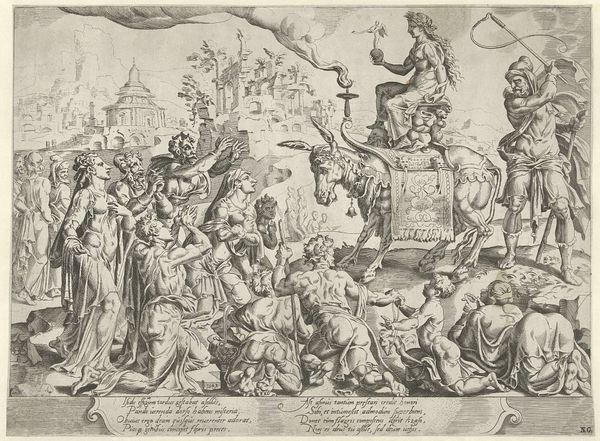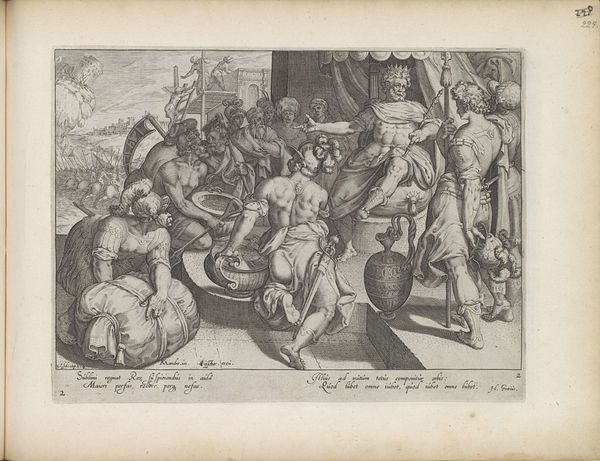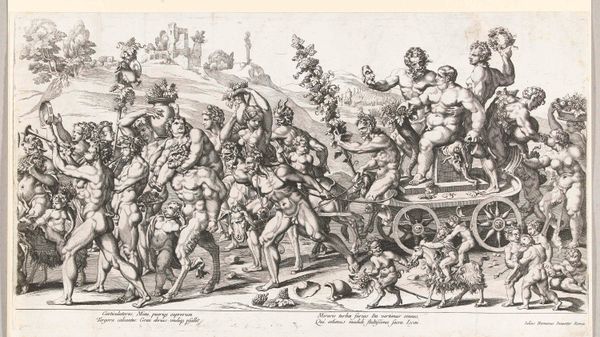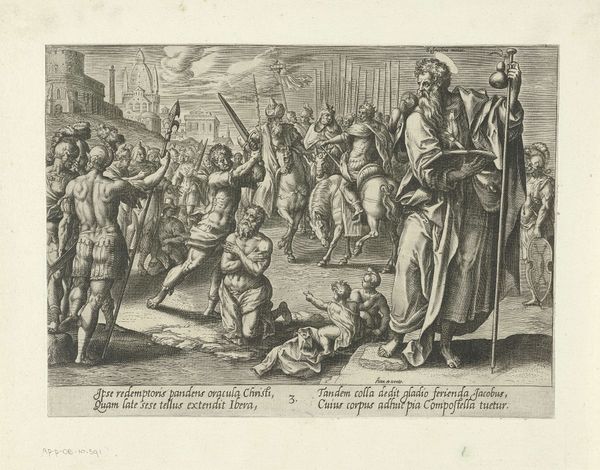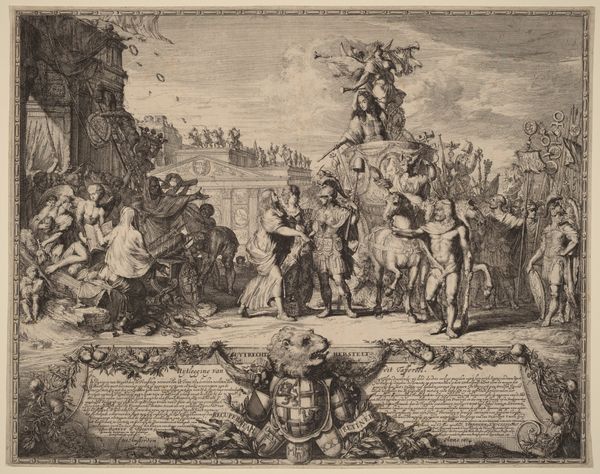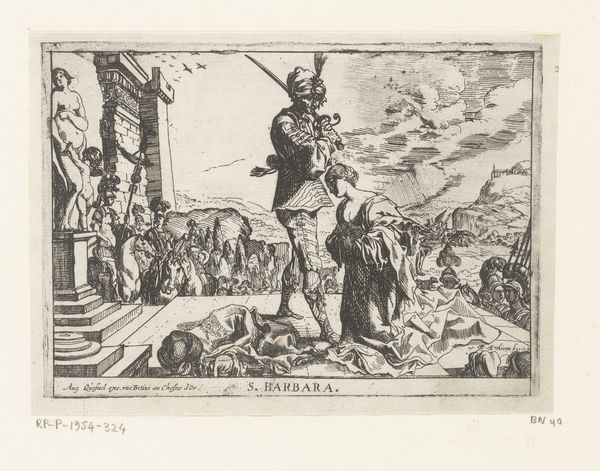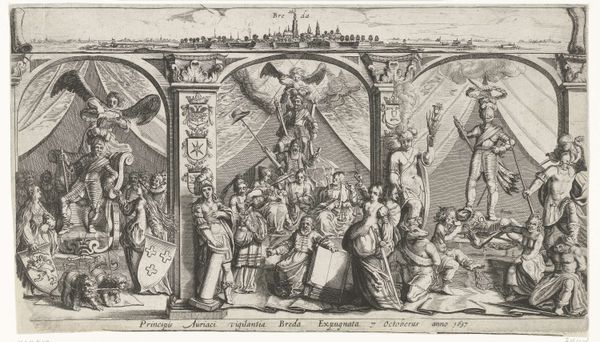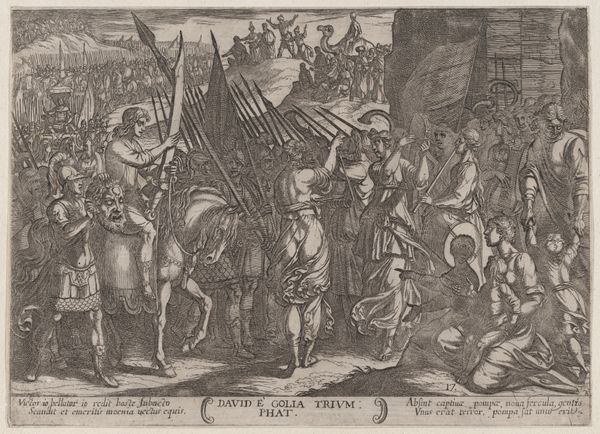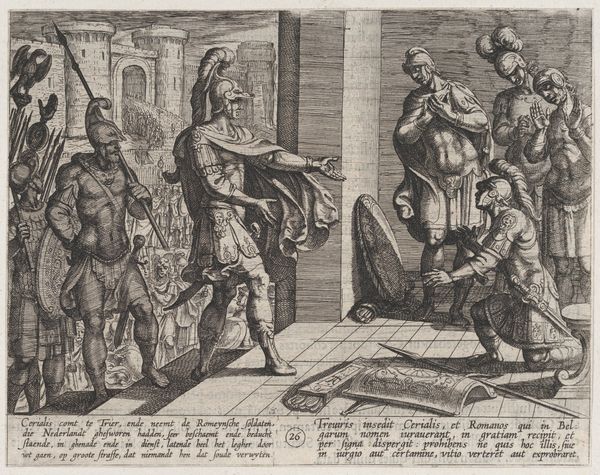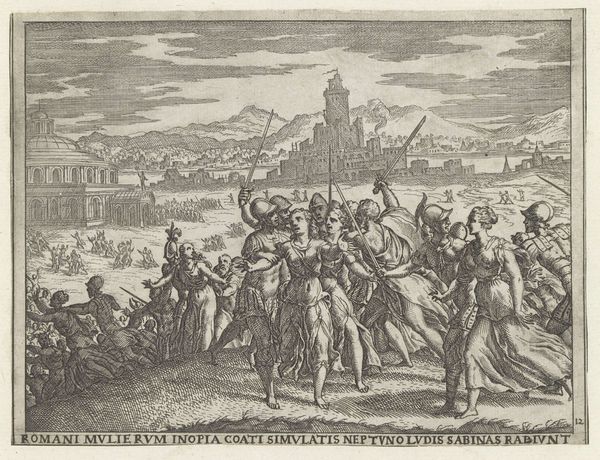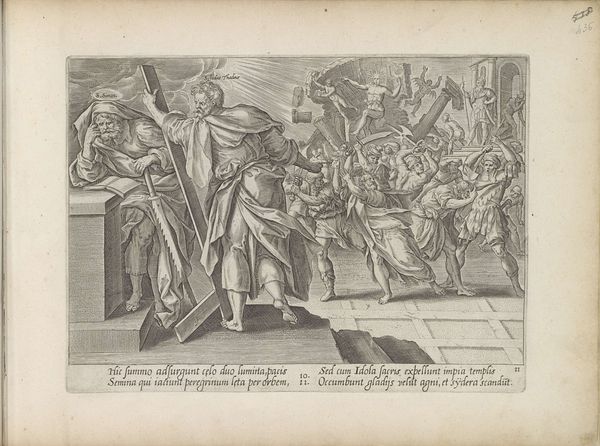
drawing, print, paper, ink, engraving
#
drawing
#
narrative-art
#
baroque
# print
#
old engraving style
#
landscape
#
figuration
#
paper
#
ink
#
cityscape
#
history-painting
#
engraving
Dimensions: height 251 mm, width 321 mm, height 215 mm, width 246 mm
Copyright: Rijks Museum: Open Domain
Curator: I am struck by the fragmented nature of memory represented here. Look at this colossal head and foot in the foreground. Editor: Indeed. It is interesting how the artist chose to depict the famous Colossus of Rhodes. This engraving, dating back to 1614, is entitled "Kolos van Rhodos," created by Crispijn van de Passe the Younger, and currently held in the Rijksmuseum's collection. It seems a somewhat mournful rendition of a wonder of the ancient world. Curator: Absolutely, I notice how the destroyed Colossus is still looming over a busy city port. What stands out is how the artist intertwines themes of grandeur and decay, all speaking to the ephemeral nature of power and even civilizations. Editor: Agreed. The ruined pieces almost dwarf the contemporary city in the background. And who are these figures witnessing its demise? Is it meant to tell something about those who forget the cultural significance? Curator: Possibly. There are other elements. A radiant figure bearing a torch stands where the original Colossus was located, symbolizing hope. Editor: Or perhaps the perpetual promise of technological hubris and the cyclical rise and fall of power, as new cities emerge atop the rubble of the old. I find it a potent visualization of cultural shifts. What does this shift represent? What is carried? Curator: Exactly, the work offers a powerful meditation on the ever-changing tides of history and how monuments of the past, even in their ruin, continue to shape the present, for both good and bad. Editor: This piece makes me consider how contemporary society views history and the role such legendary works can play in shaping socio-political narratives. Thank you.
Comments
No comments
Be the first to comment and join the conversation on the ultimate creative platform.
